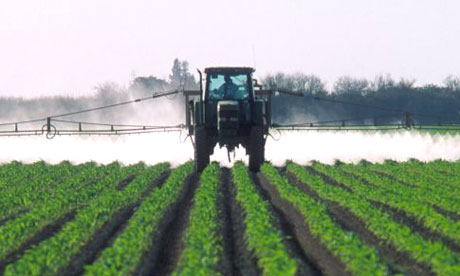Salmonella bacteria can be found in raw meat and poultry products and if ingested can cause mild to severe illnesses or death. It is estimated that every year in the United States salmonella causes one million illnesses with 19,000 hospitalizations and 380 deaths. Salmonella illnesses and deaths cost $3.4 billion yearly in medical costs, wage loss and premature death.
Over the last couple of years, there have been numerous salmonella outbreaks and thousands of pounds of raw meat and poultry products recalled due to salmonella contamination.
 The Department of Agriculture’s Food Safety Inspection Service (FSIS) has the authority to deem any pathogen, such as salmonella, that would ordinarily render a product injurious to health an adulterant. If salmonella was deemed an adulterant any raw meat or poultry products contaminated with salmonella would be prohibited from being sold to consumers. However, FSIS claims they do not have the authority to deem salmonella an adulterant because common cooking practices can kill salmonella.
The Department of Agriculture’s Food Safety Inspection Service (FSIS) has the authority to deem any pathogen, such as salmonella, that would ordinarily render a product injurious to health an adulterant. If salmonella was deemed an adulterant any raw meat or poultry products contaminated with salmonella would be prohibited from being sold to consumers. However, FSIS claims they do not have the authority to deem salmonella an adulterant because common cooking practices can kill salmonella.
All meat products inspected by FSIS are required to be labeled with safe handling instructions. Part of the safe handling instructions states “Some food products may contain bacteria that could cause illness if the product is mishandled or cooked improperly. For your protection, follow these safe handling instructions…”One of the suggested safe handling instructions is to “cook thoroughly.”
What does “cook thoroughly” mean? According to FSIS’s website, all raw beef, pork, lamb, veal steaks, chops, and roasts should be cooked to a minimum internal temperature of 145°F. All raw ground beef, pork, lamb, and veal should be cooked to an internal temperature of 160°F and all poultry should be cooked to an internal temperature of 165°F.
However, the “cook thoroughly” instructions on the safe handling label does not give consumers any guidance on the temperature they are supposed to cook their food in order to prevent foodborne illnesses, such as salmonella.
If salmonella remains unclassified as an adulterant, then the suggested cooking temperature to kill off bacteria contamination should be included on the safe handling instructions label.
Over the last couple of years, there have been numerous salmonella outbreaks and thousands of pounds of raw meat and poultry products recalled due to salmonella contamination.
 The Department of Agriculture’s Food Safety Inspection Service (FSIS) has the authority to deem any pathogen, such as salmonella, that would ordinarily render a product injurious to health an adulterant. If salmonella was deemed an adulterant any raw meat or poultry products contaminated with salmonella would be prohibited from being sold to consumers. However, FSIS claims they do not have the authority to deem salmonella an adulterant because common cooking practices can kill salmonella.
The Department of Agriculture’s Food Safety Inspection Service (FSIS) has the authority to deem any pathogen, such as salmonella, that would ordinarily render a product injurious to health an adulterant. If salmonella was deemed an adulterant any raw meat or poultry products contaminated with salmonella would be prohibited from being sold to consumers. However, FSIS claims they do not have the authority to deem salmonella an adulterant because common cooking practices can kill salmonella.All meat products inspected by FSIS are required to be labeled with safe handling instructions. Part of the safe handling instructions states “Some food products may contain bacteria that could cause illness if the product is mishandled or cooked improperly. For your protection, follow these safe handling instructions…”One of the suggested safe handling instructions is to “cook thoroughly.”
What does “cook thoroughly” mean? According to FSIS’s website, all raw beef, pork, lamb, veal steaks, chops, and roasts should be cooked to a minimum internal temperature of 145°F. All raw ground beef, pork, lamb, and veal should be cooked to an internal temperature of 160°F and all poultry should be cooked to an internal temperature of 165°F.
However, the “cook thoroughly” instructions on the safe handling label does not give consumers any guidance on the temperature they are supposed to cook their food in order to prevent foodborne illnesses, such as salmonella.
If salmonella remains unclassified as an adulterant, then the suggested cooking temperature to kill off bacteria contamination should be included on the safe handling instructions label.




